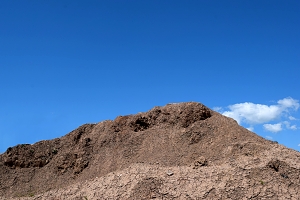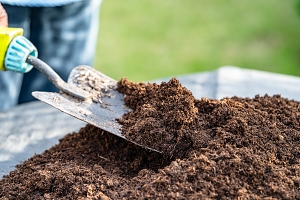Embarking on a construction project on your property? Chances are, at some point in the process, you’ll find yourself in need of dirt. Regardless of the project’s scale, acquiring the right type of dirt is crucial for successful and timely completion.
Selecting the Right Type of Dirt for Your Project
 In the realm of construction projects, it’s essential to recognize that not all dirt is created equal. The selection of the appropriate dirt type can be a make-or-break factor, influencing both the cost and the success of your endeavor. Therefore, taking the time to understand the unique requirements of your project is paramount to avoid unexpected complications and setbacks.
In the realm of construction projects, it’s essential to recognize that not all dirt is created equal. The selection of the appropriate dirt type can be a make-or-break factor, influencing both the cost and the success of your endeavor. Therefore, taking the time to understand the unique requirements of your project is paramount to avoid unexpected complications and setbacks.
Fill Dirt: The Backbone of Stability for Construction Projects
Fill dirt emerges as the undisputed champion for most construction undertakings. Typically unearthed at depths exceeding 12 inches, fill dirt boasts a dry composition, lacks organic material, and features rocky sediment that imparts durability.
This robust structure makes fill dirt the go-to choice for larger-scale projects or those involving structures and foundations. Unlike nutrient-rich soils that might lead to breakdowns and air pockets, fill dirt ensures stability, preventing uneven settling that could compromise the integrity of your construction.
Versatile Applications of Fill Dirt
The applications of fill dirt are as varied as the projects it supports:
- Land grading and sloping
- Site preparation
- Creating ditches
- Forming drainage pathway
- Under sidewalks
- Driveways
- Sheds
- Raised flower beds
- Inground pools
- Man-made hills
Serving as the foundational layer, fill dirt guarantees stability, protecting against surface irregularities that could jeopardize the longevity of your structures and landscaping.
Topsoil: Nurturing Lush Landscapes
 In the realm of soil science, topsoil takes center stage, nestled approximately 4 to 12 inches beneath the surface. What sets topsoil apart is its opulent blend of rich nutrients and organic content, rendering it the undisputed champion for those looking to breathe life into their landscapes, embark on gardening endeavors, or craft a lush, verdant yard. The organic matter within topsoil acts as a natural elixir, promoting oxygen flow to plants and creating the perfect environment for robust and healthy growth.
In the realm of soil science, topsoil takes center stage, nestled approximately 4 to 12 inches beneath the surface. What sets topsoil apart is its opulent blend of rich nutrients and organic content, rendering it the undisputed champion for those looking to breathe life into their landscapes, embark on gardening endeavors, or craft a lush, verdant yard. The organic matter within topsoil acts as a natural elixir, promoting oxygen flow to plants and creating the perfect environment for robust and healthy growth.
While topsoil stands as a beacon of fertility, its organic content undergoes a natural breakdown over time. This decomposition process can lead to the formation of air pockets within the soil, potentially causing some settling. However, before apprehension takes root, a strategic solution presents itself. The key lies in the judicious placement of topsoil over a foundational layer of fill dirt.
By overlaying topsoil on a base of fill dirt, you create a harmonious synergy. The stability provided by the sturdy composition of fill dirt acts as a robust foundation, countering any settling tendencies that may arise from the organic breakdown of topsoil. This strategic arrangement not only ensures optimal support for your landscaping projects but also safeguards the structural integrity of underlying features, whether they be the foundations of structures or the framework of your garden.
In essence, topsoil emerges not just as a fertile medium for plant growth but as a dynamic force when coupled with the stability of fill dirt. It becomes a dynamic duo, fostering an environment where flourishing landscapes and thriving gardens coexist seamlessly. So, whether you’re envisioning a blossoming garden oasis or an emerald green yard, the strategic partnership of topsoil and fill dirt is your blueprint for sustained success in landscaping endeavors.
Determining the Right Dirt Quantity for Your Project
Unlike the straightforward measurements applied to other materials, determining the right dirt quantity involves understanding the nuances of cubic feet and cubic yards, the standard units in which dirt is sold.
Typically, topsoil is measured in cubic feet, as most projects don’t require an extensive amount, while fill dirt is commonly sold or offered in cubic yards. Understanding the basic conversions is key:
- 1 cubic yard is equivalent to 27 cubic feet
- 1 cubic foot is defined as 12 inches x 12 inches x 12 inches.
To visualize this, imagine an empty cube with sides measuring 1 yard. Fill that cube with dirt, and you’ve neatly packaged one cubic yard of dirt. Calculating the amount of dirt you need involves a series of steps. Let’s break down the process for both topsoil and fill dirt:
Calculating Topsoil for a Flower Bed (6” deep, 12’ long, 12’ wide):
- Convert the dimension in inches to feet: Divide 6 inches by 12 inches, yielding 0.5 feet.
- Multiply the three dimensions together: Multiply 0.5 feet by 12 feet by 12 feet, resulting in 72 cubic feet.
- Convert cubic feet to cubic yards: Divide 72 by 27 (the number of cubic feet in a cubic yard), arriving at 2.67 cubic yards.
In this scenario, you would need 2.67 cubic yards of dirt to fill the flower bed. Alternatively, you can perform the calculation by converting all three dimensions to yards:
- Convert the dimension in inches to yards: Divide 6 inches by 36 inches, resulting in 0.167 yards.
- Convert dimensions in feet to yards: Divide 12 feet by 3, arriving at 4 yards.
- Multiply the three dimensions together: Multiply 0.167 yards by 4 yards by 4 yards, yielding 2.67 cubic yards.
For those not comfortable with manual calculations, numerous online dirt calculators are available for free. These tools simplify the process, ensuring precision without the need for intricate mathematical calculations. Whether you opt for manual calculations or digital assistance, accurately determining the right dirt quantity is fundamental to the success of your construction project.
Get In Touch with the Northern Virginia Dirt Experts
When it comes to purchasing dirt, various outlets like hardware stores and nurseries offer options. Topsoil is commonly available, but finding fill dirt might require more effort. Consider Dirt Connections, offering free dirt delivery to commercial and residential sites in and around Northern Virginia, Maryland, and, the greater Washington D.C. area. Contact us today to streamline your dirt acquisition process and ensure a seamless construction project!








































